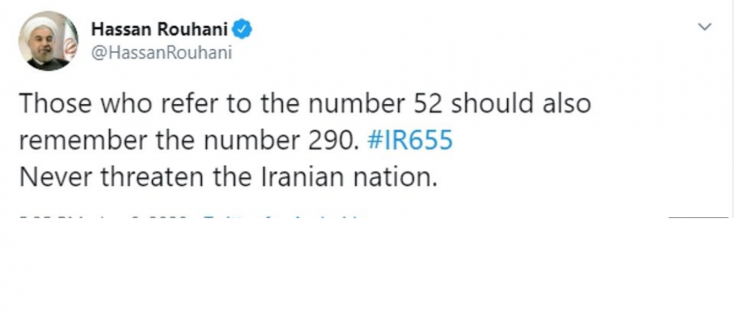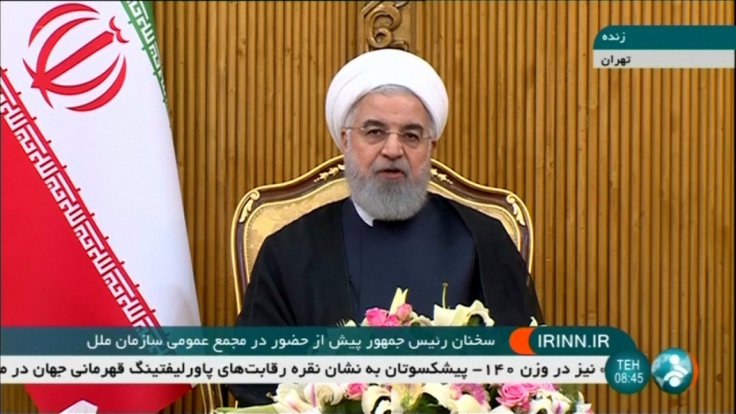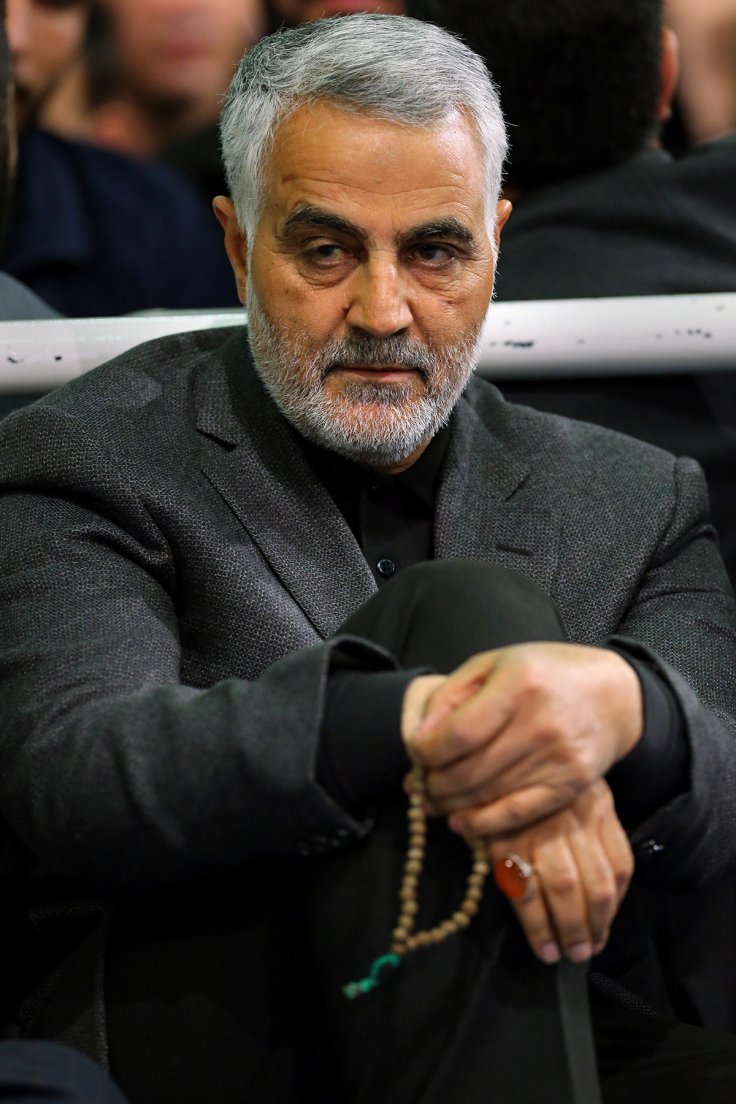The world is speculating over the nature of Iran's strike back against the United States in the wake of the killing of top ranking IRGC commander and the leader of the Quds Force, Qasem Soleimani. A tweet by President Hassan Rouhani on Monday has offered a glimpse into the possible options the Iranian think tanks have at hand. Warning the US not to threaten the Iranian nation, Rouhani sternly asked his foes to remember 'the number 290'.
Think tanks have always said Iran might shun a direct attack on the US interests but would use its proxies to inflict a humiliating assault on the 'Great Satan.' In that context, Rouhani's tweet assumes importance. He was drawing attention to the crash of the Iran Air passenger flight in 1988. The US Navy shot down the passenger plane over Iran's territorial waters over the Persian Gulf, believing that it was a fighter jet. As many as 290 people were killed in the attack.

Six months later, in December 1988, the Lockerbie plane crash happened. As many as 290 passengers in the American flight died in the crash, which happened over Lockerbie in Scotland. By reminding the number 290 - the number of victims in the Iran Air plane crash -- Rouhani was subtly drawing the Americans' attention to the PanAm flight bombing, which was called a terror attack by the US.
Weeping Supreme Leader Ayatollah Khamenei
Iran was not directly blamed for the Pan American bombing. Blame rested officially on Colonel Gaddafi's Libya, but prominent geopolitical and intelligence experts believed that the order to strike the American plane came directly from Iran. Rouhani's tweet can also be interpreted as Iran's admission of role in the Lockerbie bombing 30 years after the terror strike.

The image of the weeping Supreme Leader, Ayatollah Khamenei, on Monday captures the depth of Iran's hurt and it may be only a matter of time before Tehran strikes s US target. Iran will choose the time and mode of the attack, but analysts believe that it may avoid launching a full frontal attack on a US target in the region.
What will be that target? It's anyone's guess. A whole lot strategic US assets are within striking distance of Iran. These include the US military bases in countries like Iraq, Bahrain, Djibouti, Israel, Jordan, Turkey, Kuwait, Oman and the UAE. Some of these are Iran's foes while some are neutral or aligned with Tehran. An Iranian strike at any of these places can snowball into a direct war. It can even spin out into a wider war in the region, if not the World War 3.
A direct attack on the US bases in any of these places, or on US vessels in the Gulf or the strategic Strait of Hormuz is fraught with dangers. At the same time, Iran is well disposed to use the militias it controls in the region to launch an attack on the US. Will Iran resort to a Lockerbie-like attack on US interests to avenge the death of the Quds Force commander?
What is Lockerbie bombing?
The Lockerbie incident refers to the crash of the Pan Am Flight 103, over Lockerbie, Scotland, on December 21, 1988. The passenger airliner operated by Pan American World Airways (Pan Am) went down after a bomb was detonated in-flight. All 259 people on board and 11 people on the ground were killed. The Boeing 747 was flying to New York City from London. The timer-activated bomb was hidden in a cassette player that was stored in a suitcase. The bomb was made with the odourless plastic explosive Semtex. Most of the victims were Americans.
The investigators held two Libyan intelligence operatives directly responsible for the terror attack. Gaddafi denied responsibility and refused to cooperate in the probe initially. However, he yielded ten years later and the suspects were extradited to the UK. In 2001, after an investigation that involved interviewing 15,000 people and examining 180,000 pieces of evidence, Abdelbaset Ali Mohmed al-Megrahi was convicted of the bombing and sentenced to 20 years in prison.

Shooting down of Iran Air flight 655
The Iranian passenger plane flying from Tehran to Dubai was shot down in July 1988. It was a guided cruise missile launched from the USS Vincennes in the Strait of Hormuz that led to the death of 290 people on board. The incident happened during the Iran-Iraq war. The Airbus A300 had taken off from the Bandar-e ʿAbbās airbase in Iran, which was used by both military and civilian planes. The aggressive commander of the USS Vincennes, Capt. William C. Rogers III, concluded that it was a fighter jet and ordered the launch of two surface-to-air missiles. Later, the US military was accused of a cover-up.









